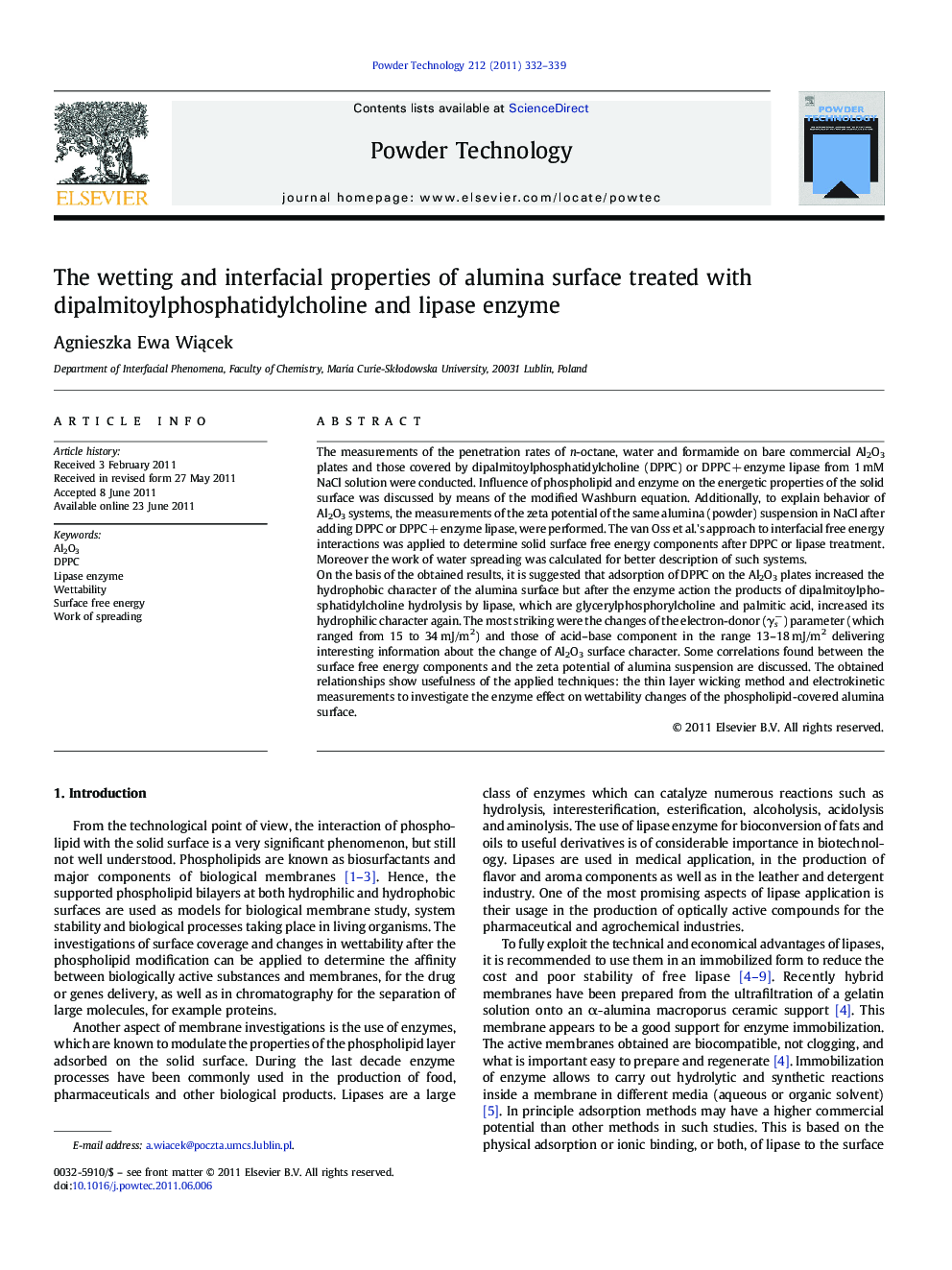| Article ID | Journal | Published Year | Pages | File Type |
|---|---|---|---|---|
| 237530 | Powder Technology | 2011 | 8 Pages |
The measurements of the penetration rates of n-octane, water and formamide on bare commercial Al2O3 plates and those covered by dipalmitoylphosphatidylcholine (DPPC) or DPPC + enzyme lipase from 1 mM NaCl solution were conducted. Influence of phospholipid and enzyme on the energetic properties of the solid surface was discussed by means of the modified Washburn equation. Additionally, to explain behavior of Al2O3 systems, the measurements of the zeta potential of the same alumina (powder) suspension in NaCl after adding DPPC or DPPC + enzyme lipase, were performed. The van Oss et al.'s approach to interfacial free energy interactions was applied to determine solid surface free energy components after DPPC or lipase treatment. Moreover the work of water spreading was calculated for better description of such systems.On the basis of the obtained results, it is suggested that adsorption of DPPC on the Al2O3 plates increased the hydrophobic character of the alumina surface but after the enzyme action the products of dipalmitoylphosphatidylcholine hydrolysis by lipase, which are glycerylphosphorylcholine and palmitic acid, increased its hydrophilic character again. The most striking were the changes of the electron-donor (γs−) parameter (which ranged from 15 to 34 mJ/m2) and those of acid–base component in the range 13–18 mJ/m2 delivering interesting information about the change of Al2O3 surface character. Some correlations found between the surface free energy components and the zeta potential of alumina suspension are discussed. The obtained relationships show usefulness of the applied techniques: the thin layer wicking method and electrokinetic measurements to investigate the enzyme effect on wettability changes of the phospholipid-covered alumina surface.
Graphical abstractFigure optionsDownload full-size imageDownload as PowerPoint slideHighlights► Original alumina surface is strongly polar with the electron-donor interactions originating from the hydroxyl groups. ► The changes in the hydrophilic/hydrophobic character of alumina are reflected in the values of Al2O3 surface free energy. ► After the enzyme action the products of DPPC hydrolysis increase the hydrophilic character of Al2O3 surface. ► Using TLW, AFM and electrokinetic methods the lipase effect on wettability of the DPPC-covered alumina could be illustrated. ► Some correlations could be found between the surface free energy components and the zeta potential of alumina suspension.
